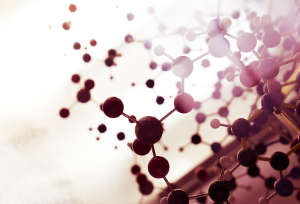|
Linear polyethylenimine (L-PEI) is a widely used cationic polymer for non-viral delivery of nucleic acids into cells. Its high charge density, chain flexibility, and ability to form stable complexes with DNA, RNA, and proteins make it an efficient transfection reagent.
Key Properties of L-PEI
- Contains only secondary amines, providing high charge density
- Available in various molecular weights (2.5 kDa to 250 kDa)
- Forms stable polyplexes with nucleic acids for effective cellular uptake
- Exhibits superior transfection efficiency compared to many conventional methods
Advantages of L-PEI for Transfection
- Overcomes cellular barriers to deliver genetic material directly to the nucleus
- Enables robust and reliable gene expression for a wide range of applications
- Provides flexibility in experimental design to optimize transfection parameters
- Applicable for transfecting various cell types, including hard-to-transfect cells
Polyethylenimine
|
|
Linear Polyethylenimine Hydrochloride (L-PEI HCl) is a high-charge cationic polymer widely utilized in molecular biology, particularly for its role as a transfection reagent. It is known for its ability to efficiently deliver nucleic acids into cells, making it a valuable tool in gene therapy and genetic engineering.
Key Properties
- Molecular Weight: Available in various molecular weights, notably 5,500, 25,000, and 160,000 Da.
- Chemical Structure: Linear formula represented as (CH₂CH₂NH)ₙ.
- Appearance: Typically appears as a white to off-white solid.
- Solubility: Highly soluble in cold and room temperature water; insoluble in common organic solvents like ethanol and acetone.
- CAS Number: 9002-98-6 for the base form, with specific derivatives having different CAS numbers.
Applications
- Gene Delivery: L-PEI HCl is particularly effective for the non-viral delivery of plasmid DNA, small interfering RNAs (siRNAs), and messenger RNAs (mRNAs) into cells. Its high charge density facilitates the formation of stable complexes with negatively charged nucleic acids, enhancing cellular uptake.
- Transfection Efficiency: It is one of the most investigated cationic polymers for transfection, often outperforming other methods in terms of efficiency and reliability.
- Industrial Uses: Beyond biological applications, L-PEI can be used to improve the properties of negatively charged dyes and enhance their adherence to surfaces.
Handling and Safety
- Hazards: Classified as an irritant; appropriate safety measures, including gloves and goggles, are recommended during handling.
- Storage: Should be stored at room temperature, away from moisture.
Polyethylenimine hydrochloride
|
|
Branched Polyethylenimine (BPEI) is a versatile cationic polymer known for its unique structure and properties, making it suitable for various applications, particularly in gene delivery and nanotechnology.
Key Characteristics of Branched Polyethylenimine (BPEI)
- Structure: BPEI consists of repeating units of ethylene diamine groups and features a branched architecture that includes primary, secondary, and tertiary amino groups. This structure contributes to its high cationic charge density and flexibility.
- Isoelectric Point: Approximately 11, which indicates that it remains positively charged across a wide pH range, enhancing its interaction with negatively charged substrates.
- Solubility: BPEI is soluble in water, ethanol, chloroform, and other polar solvents, making it adaptable for various formulations.
- Toxicity: BPEI exhibits higher in vitro toxicity compared to other polymers, which is a consideration for its use in biological applications
Applications
- Gene Delivery: BPEI is widely recognized for its effectiveness as a non-viral transfection agent. It forms stable complexes with nucleic acids, facilitating their delivery into cells. Its ability to bind to DNA through electrostatic interactions allows for efficient transfection, making it a gold standard in gene therapy research
- Nanoparticle Functionalization: BPEI can be covalently linked to carboxyl-functionalized nanoparticles, creating a robust and positively charged surface. This property is useful in various applications, including drug delivery systems and biosensors
- Layer-by-Layer Assembly: BPEI is employed in the layer-by-layer construction of nanoparticle surfaces, enhancing stability and functionality in composite materials
- Color Engineering: Due to its strong positive charge and stability in saline conditions, BPEI is also used in the color engineering of materials, particularly in nanoparticle applications.
Advantages
- High Charge Density: The presence of multiple amino groups allows BPEI to interact strongly with negatively charged molecules, enhancing its binding capacity.
- Versatility in Formulations: Its solubility in various solvents and stability in saline solutions make it suitable for diverse applications in biomedical and materials science.
- Stability: BPEI maintains its properties in high salt concentrations, which is crucial for applications in biological environments where ionic strength can vary
Branched Polyethylenimine
|
|
Transporter 5 is a ready-to-use transfection reagent derived from a proprietary linear polyethylenimine (PEI) derivative, specifically PEI MAX. This reagent is designed for efficient delivery of nucleic acids into various cell types, including mammalian and insect cells such as HEK-293, CHO, and Sf9.
Key Features of Transporter 5
- Composition: Formulated from linear polyethylenimine MAX (PEI MAX), which is known for its high transfection efficiency and low cytotoxicity.
- Mechanism of Action: Transporter 5 condenses DNA into positively charged complexes that facilitate cellular uptake through endocytosis. Once inside the cell, it helps release the genetic material into the cytoplasm, effectively bypassing endosomal degradation.
- Versatility: Suitable for a wide range of applications, including gene expression studies, protein production, and other molecular biology experiments.
Advantages
- High Efficiency: Transporter 5 is recognized for its superior ability to transfect a variety of cell lines, yielding high expression levels of the delivered genes.
- Ease of Use: It is a ready-to-use solution, simplifying the transfection process and reducing preparation time compared to traditional methods.
- Quality Control: The production process ensures consistency and reliability, with stringent quality control measures in place to maintain performance across batches.
Applications
|


